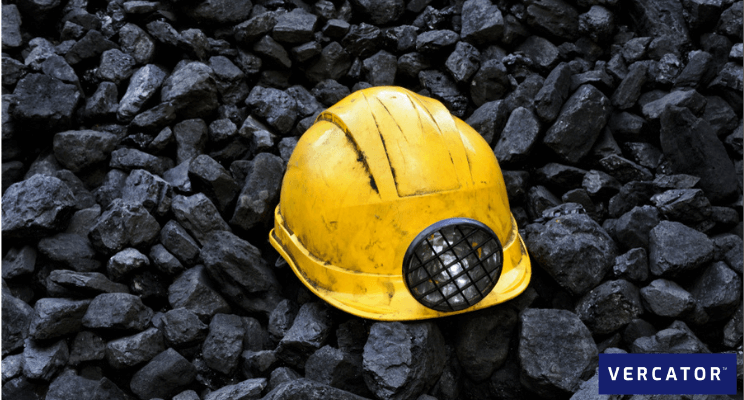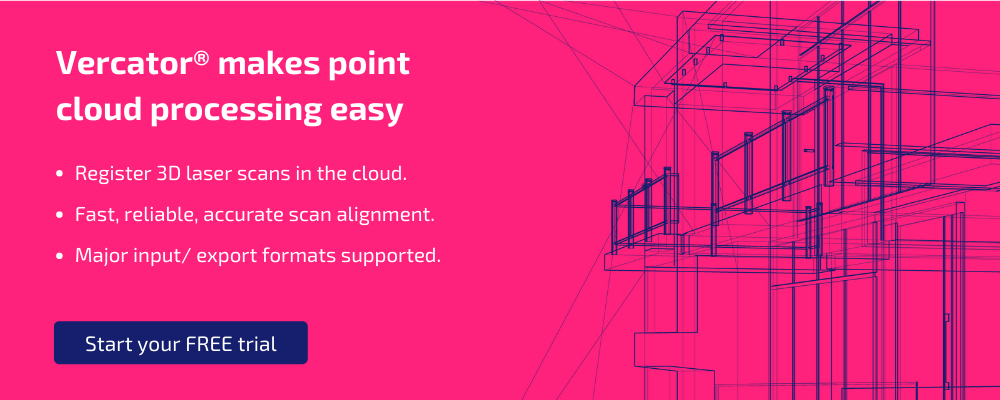How to Minimise Hazards in the Mining Industry

Mining has a reputation for being a hazardous industry with risks present at every turn. With 1.4 workers per 100 suffering from job-related injuries or illness in 2019, statistics show mining is no more dangerous for non-fatal injuries than construction or manufacturing.¹ Fatal injury results however are a different story, with mining and quarrying having the highest incidence of fatal accidents at work.
With these higher levels of risk in comparison to other industries, mining has to take the best possible health and safety precautions to mitigate risks and ensure the safety of its workers.
The key to staying safe in any industry is identifying and understanding the risks and how to manage them in the best way. This article will outline how visual technology is helping the mining industry minimise these risks and plan for safer outcomes. Let’s get started.²
Understand the risks you face
While there are multiple hazards in mining, these are some of the most common ones that businesses need to be focused on:
- Toxic gases: Carbon monoxide, carbon dioxide, sulphur dioxide, and hydrogen sulphide in the air. These gases are a byproduct of the mining process
- Equipment injuries: From crush injuries to faulty equipment, accidents involving mining equipment can cause serious injuries in the workplace.
- Fires: Fires start due to short-circuits in equipment or other mechanical related faults.
- Floods: Caused by unsafe conditions in the mine itself or intentional explosions, leading to an inrush of water.
- Collapse: Infrastructure collapse leads to rocks and debris becoming unstable and striking workers.
- Falls: Ground falls, rock bursts, and ground bumps can lead to supporting pillars and floors buckling and exploding, causing potentially fatalities in the area.
While these environmental hazards are relatively straightforward to identify, if not remedy, some of the operational risks are habitual, long-term and often overlooked. These include:
- Disease and other health conditions: Lung disease, silicosis, and hearing loss are some of the conditions miners can develop over time as a result of workplace activity.
- Noise: Miners are constantly subject to noise exposure from drilling or heavy machinery, especially in underground mines, which over time can cause hearing loss.
- Stress and fatigue: The fatigue that causes accidents in the mining industry is often due to mental rather than physical fatigue. Mental fatigue is often caused by a lack of disturbed sleep, which can be a result of intense shift work.
Although safety measures and policies continue to be updated to avoid disasters, there are still actions the industry can take to ensure hazards are reduced and workers are kept safe.
Minimise time on site
Technological solutions are now available to help address both environmental and operational hazards, and their causes. By creating accurate 3D point clouds, valuable insight is delivered faster.
With the help of new and developing technology, the process of creating point clouds can be carried out with minimal time spent on-site. Mining companies have previously used drones to monitor and inspect deep underground shafts, and it is now possible to integrate drone-based reality capture into multi-sensor workflows. The result is less disruption to on-site operations, thousands of accurate data points, and improved access to potentially hazardous terrains without endangering workforce safety.
Drones aside, there are other innovative ways remote data capture is being deployed to reduce the time workers spend on-site. For example, Boston Dynamics dog-shaped robot, Spot, is fitted with a 3D laser scanner, and using a mobile device can be ‘walked’ through a site remotely, even when the terrain might cause problems for a human operator.³ In fact, robots can be used to perform a variety of other mining-related tasks. This includes activities such as laying explosives, stabilising mine roofs, or digging in places where humans can't work safely.
To make the most of the information gathered, joined-up long and short-term planning is required. Here, visual technology is also having a major impact.
Improve planning procedures
Planning plays a fundamental role in any mining operation, from the initial resource estimate to the project feasibility and implementation stages. Such planning has to be inherently flexible, to take into account:
- The viability of the mine
- Whether or not it is economically feasible
- How long extraction will take
- The safest and best process for extraction
The dynamic nature of mining creates uncertainty across many of these different elements. Unexpected events will often arise which will require mine planners to reschedule and revamp their plans.
3D scanning and reality capture create a far better and more accurate picture of the environment before operations begin, increasing safety and minimising mistakes, delays, and potentially flawed assumptions.
Reality capture allows mine planners to get a more complete view by stitching together hundreds of multiple laser scans to create complex 3D maps of the physical location. This is where cloud-based registration software comes into its own. It speeds up the registration and scanning processes to enable maps and data to be updated in near real-time and therefore be more relevant and actionable.
Suggested reading: To learn more about the planning capabilities of laser scanning, check out our blog — How To Plan a 3D Laser Scanning Survey
Ongoing observation and testing
Mines are constantly altering, and planning has to change accordingly, based on the current situation and its potential impact. Faced with such uncertainty, it is vital to have options and consider as many scenarios as possible to make decisions that minimise risk and create the best outcomes.
By combining terrestrial laser scanning, videos and mobile reality capture, highly accurate measurement and photorealistic images can be captured and created rapidly. Such data is used to create digital twins (a digital replica of both the above and below ground mine site). By using an integrated twin model of the mine, businesses can better understand its processes, independencies, and changes, and look at what-if scenarios.
The twin, which can be updated as regularly as possible, matches its real-world counterpart exactly. The model can then be used to test new designs, analyse results, and optimise operations while improving the safety of the workforce.
Risks are ever-present on-site, and it's essential to ensure employees are trained and prepared for dangerous work. Using the twin for virtual reality-based training sessions enables miners to practice vital safety approaches such as where to walk, what to do, and the best use of equipment. Furthermore, as the environment changes during the mining process, you can update the digital twin and its training modules accordingly.
Suggested reading: For more on the construction of digital twins, take a look at our blog — How To Make a Digital Twin: The Options, Types and Outputs
Technology holds the key
Reality capture technology is central to minimising hazards in the mining industry, and the good news is that it is becoming cheaper and more accessible. 3D laser scanning is now a mature technology. Scanning instruments are smaller, lighter and can even be remotely operated.
As a result, we are moving into a boom time for scanning, and it comes just in time to mitigate the higher risks associated with the mining industry. At some point, no mine will be without an accurate as-built record captured using 3D laser scanning.
However, once the 3D laser scanning has been carried out, you still need to get that wealth of point cloud data from the scanner onto the computer, analysed and actioned. And so, the number-crunching begins. At Vercator, we've pioneered automation within point cloud registration to make this process faster, more accurate and more manageable.
To realise the fantastic potential of multi-scan reality capture, we have developed high-speed, robust, automatic alignment techniques which can scale to potentially thousands of scans. That requires sophisticated vector-based processing software, and coupled with our cloud implementation, this enables the rapid capture of data from multiple sources, regardless of the site, and accelerates the alignment and registration process to produce shareable insights and outcomes.
The power of reality capture software and the creation of digital twins is truly transforming mining safety. If you're interested in how Vercator Cloud can help you optimise the safety of your mines, get in touch with us today.
¹ Nonfatal injury and illness rate of the mining industry in the United States from 2007 to 2019
² Accidents at work - statistics by economic activity
³ Expanding Horizons: Reality Capture is Providing Innovative and Safe Ways to Map More Environments
Tags: surveying, reality capture, mining


